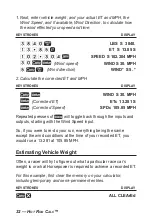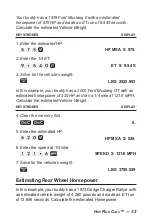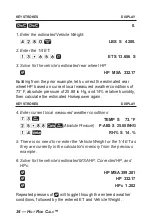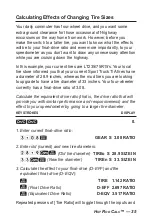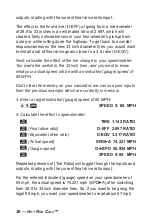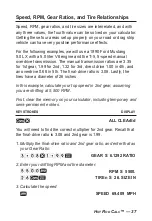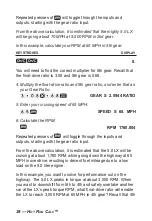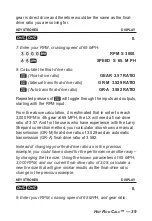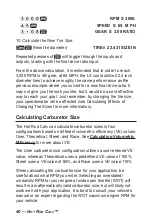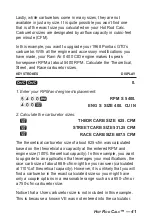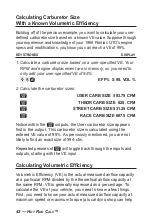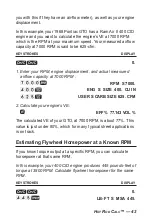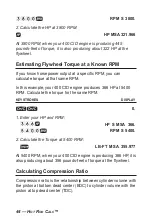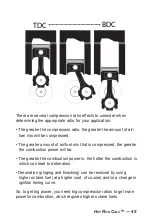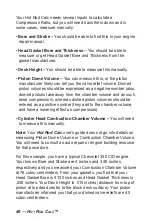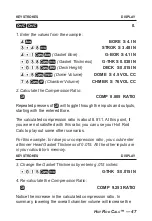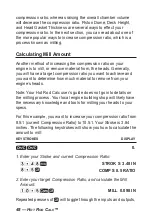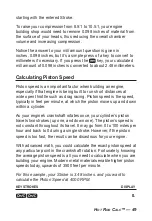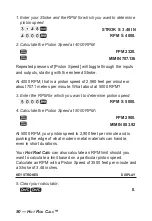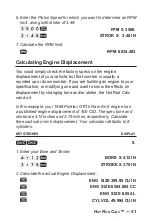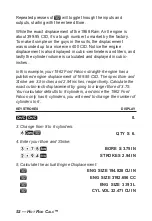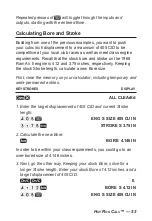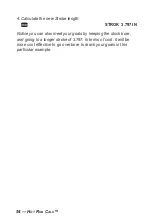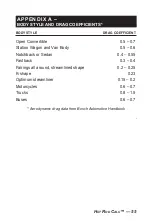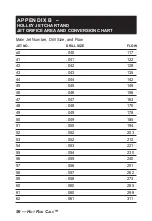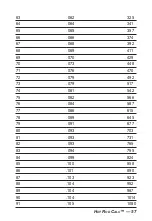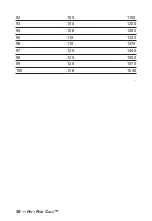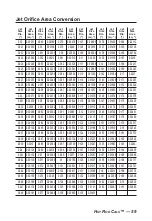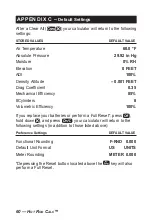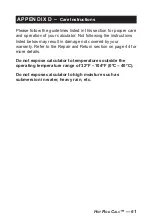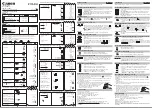
46 — H
OT
R
OD
C
ALC
™
Your Hot Rod Calc needs several inputs to calculate a
Compression Ratio, but you will need track them down and in
some cases, measure manually:
•
Bore and Stroke –
You should be able to find this in your engine
repair manual.
•
Head Gasket Bore and Thickness –
You should be able to
measure or get Head Gasket Bore and Thickness from the
gasket manufacturer.
•
Deck Height –
You should be able to measure this manually.
•
Piston Dome Volume –
You can measure this, or the piston
manufacturer likely can tell you the valve relief volume. Domed
piston volumes should be expressed as a negative number (also,
domed pistons take away from the chamber volume and as such,
raise compression), whereas dished piston volumes should be
entered as a positive number (they add to the chamber volume,
and have a lowering effect on compression).
•
Cylinder Head Combustion Chamber Volume –
You will need
to measure this manually.
Note:
Your
Hot Rod Calc
user’s guide does not go into details on
measuring Piston Dome Volume or Combustion Chamber Volume.
You will need to consult an auto repair or engine building resource
for that procedure.
For this example, you have a typical Chevrolet 350 CID engine.
Your known Bore and Stroke are 4 inches and 3.48 inches,
respectively and you measured your Combustion Chamber Volume
at 76 cubic-centimeters. From your gaskets, you find that your
Head Gasket Bore is 4.100 inches and Head Gasket Thickness is
.038 inches. Your Deck Height is .015 inches (distance from top of
piston at top dead center to the block deck surface). Your piston
manufacturer informed you that your dished valve reliefs are 4.5
cubic-centimeters.
Summary of Contents for Hot Rod Calc 8703
Page 1: ...HOT ROD CALC 1...
Page 68: ...66 HOT ROD CALC...

